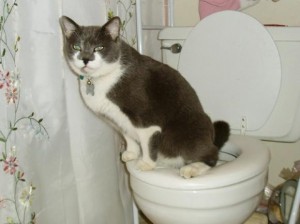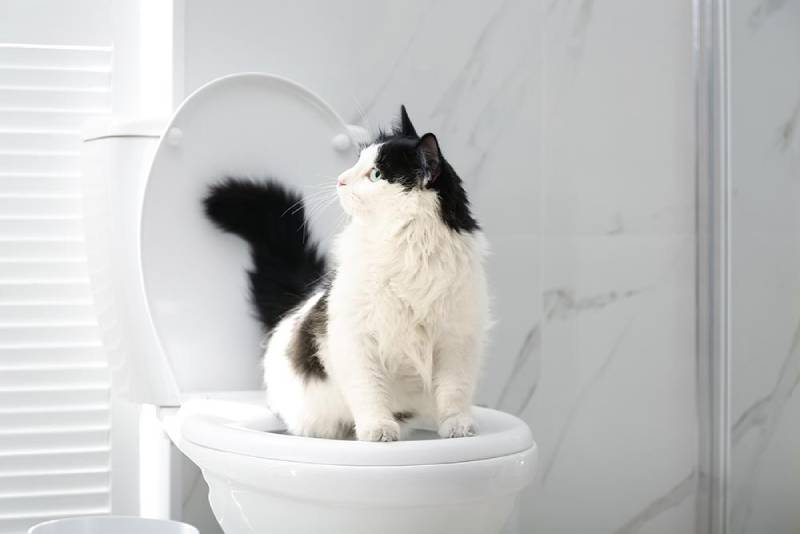Prevent Clogs and Damage: Don't Flush Cat Poop Down Your Toilet - Professional Recommendations
Prevent Clogs and Damage: Don't Flush Cat Poop Down Your Toilet - Professional Recommendations
Blog Article
Just about everyone has got their private opinion on the subject of How to Dispose of Cat Poop and Litter Without Plastic Bags.

Intro
As cat proprietors, it's vital to be mindful of how we get rid of our feline close friends' waste. While it may seem hassle-free to purge cat poop down the toilet, this practice can have detrimental effects for both the setting and human wellness.
Environmental Impact
Flushing feline poop introduces dangerous microorganisms and parasites into the water system, posturing a substantial threat to marine communities. These impurities can adversely influence aquatic life and concession water quality.
Health Risks
In addition to environmental concerns, flushing pet cat waste can likewise present health and wellness dangers to people. Pet cat feces might contain Toxoplasma gondii, a parasite that can trigger toxoplasmosis-- a potentially serious health problem, especially for expectant females and people with weakened body immune systems.
Alternatives to Flushing
Fortunately, there are safer and more liable ways to take care of pet cat poop. Think about the complying with choices:
1. Scoop and Dispose in Trash
The most usual technique of dealing with pet cat poop is to scoop it right into a naturally degradable bag and throw it in the garbage. Make sure to use a dedicated trash scoop and throw away the waste immediately.
2. Usage Biodegradable Litter
Select eco-friendly cat trash made from materials such as corn or wheat. These clutters are eco-friendly and can be securely dealt with in the garbage.
3. Bury in the Yard
If you have a backyard, think about hiding cat waste in an assigned location far from vegetable yards and water sources. Make certain to dig deep sufficient to avoid contamination of groundwater.
4. Mount a Pet Waste Disposal System
Invest in a pet waste disposal system particularly made for feline waste. These systems utilize enzymes to break down the waste, reducing odor and environmental effect.
Verdict
Responsible pet dog ownership prolongs past providing food and shelter-- it additionally involves correct waste management. By avoiding purging cat poop down the toilet and opting for alternative disposal techniques, we can decrease our environmental footprint and shield human wellness.
Why You Should NEVER Flush Cat Poop (and/or Litter) Down Your Toilet
The Problem with Litter
The main function of litter is to solidify and adhere to your cat’s waste. While this makes litter excellent for collecting cat poop and urine, it’s also the exact property that makes it a nightmare when flushed down the toilet.
Cat litter can and will clog pipes. There is non-clumping litter, but it’s still quite heavy and can build up in pipes. This is true even of supposed “flushable litter.”
The problems only compound when the litter is already clumped into cat waste. Toilet paper is among the more flushable things, and even too much of that will clog a toilet.
The Problem with Cat Poop
Sewers and septic systems are designed with human waste in mind. The microbes that help break down human waste don’t work on cat waste. Additionally, cat poop plays host to the parasite Toxoplasma gondii.
When flushed, this parasite can enter the environment in places it was never meant to, posing a risk to pregnant women, their unborn children, and other people with compromised immune systems. While it might not seem possible, flushing cat poop can indeed introduce this parasite to the public water supply.
These reasons are why, even if you’ve trained your cat to go on the toilet and flush, which is possible, it’s still not a good idea. Also, pregnant women and the immunocompromised shouldn’t change litter, either.
How to Handle Litter
The best way to handle litter is to simply put it in a plastic bag and place it in the trash. Avoiding environmental risks and possible plumbing damage is worth the extra effort.
You can also invest in devices that seal away your cat’s waste in a separate compartment, so you don’t have to change the litter nearly as often. They’re also safer for pet owners because they limit the possibility of Toxoplasma gondii exposure.
Disposing of litter the old-fashioned way will ensure you won’t have to worry about any issues that flushing the waste can potentially cause.
Take Care of Clogged Pipes with Stephens Plumbing, Heating & Air Conditioning
The reasons you should never flush cat poop down your toilet are numerous, but sometimes the inevitable happens despite your best efforts.
Stephens Plumbing, Heating & Air Conditioning is ready to help if you’re experiencing litter-blocked plumbing. Whether you need us in an emergency or want to schedule regular maintenance, we’re here for you.
https://www.stephensplumbing.net/bathroom-plumbing/never-flush-cat-poop-down-your-toilet/

I discovered that write up on Don’t flush cat feces down the toilet while doing a search on the internet. Those who enjoyed reading our page plz do not forget to pass it around. Thanks a bunch for your time. Please come by our site back soon.
See Availability Report this page